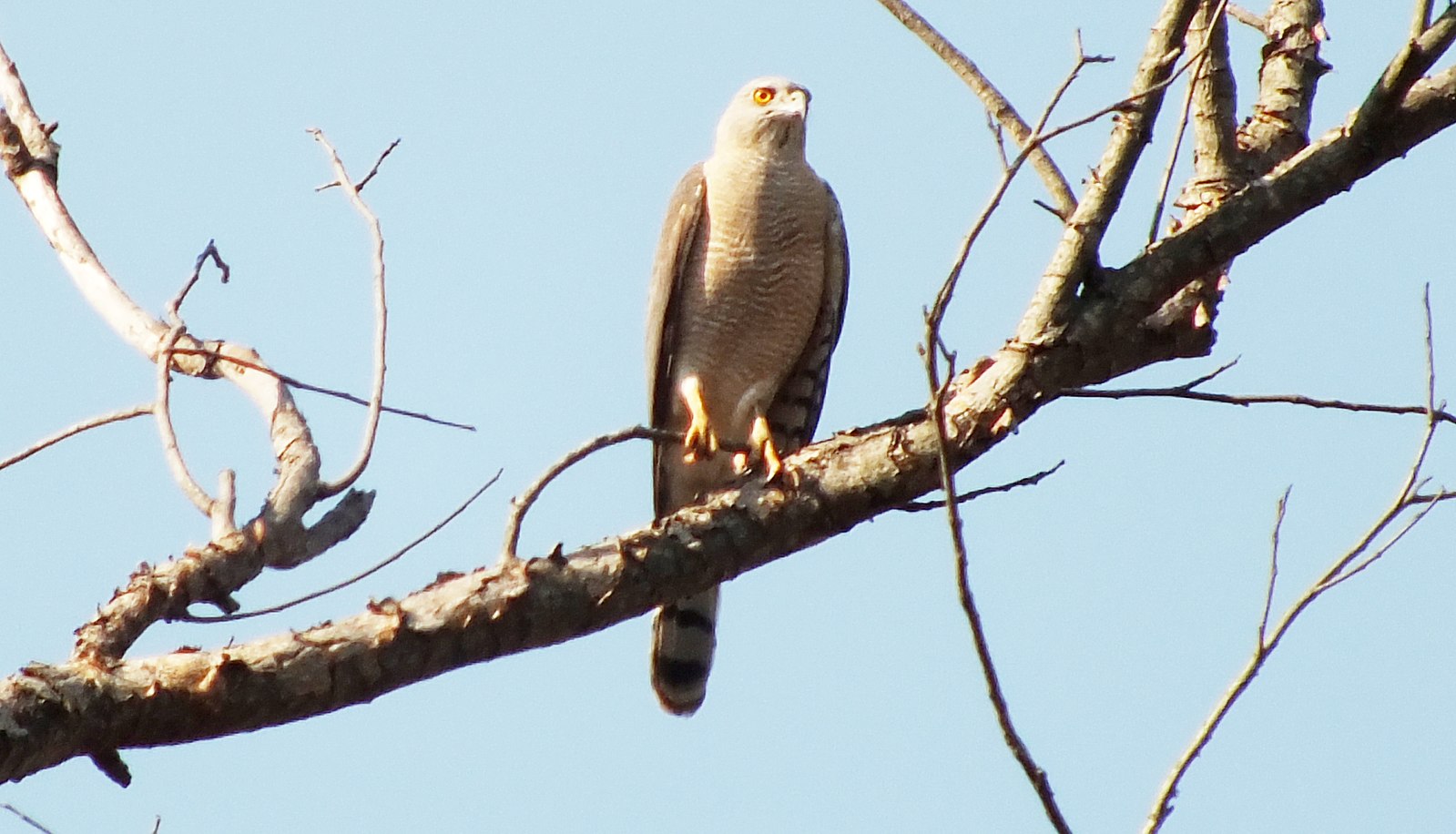Shikras, also known as little banded goshawks or Indian sparrowhawks, are small birds of prey that are known for their unique communication methods. These birds use a range of sounds and behaviors to convey messages to other members of their species, as well as to interact with their environment.
Vocal Communication
One of the primary ways that shikras communicate is through their vocalizations. These birds are known for their sharp, two-note call, which is often imitated by other birds such as drongos. Shikras use this call for a variety of purposes, including:
- Attracting Mates: Shikras use their distinctive call to attract potential mates during the breeding season.
- Defending Territory: Shikras will use their call to mark and defend their territory from other birds of prey.
- Alerting Others: Shikras will often call out to warn other birds of potential threats, such as predators or humans.
In addition to their two-note call, shikras also use a shorter sound during flight and a longer, sharper call when they are stationary. These different vocalizations serve different purposes and help the birds communicate effectively with their surroundings.
Non-Vocal Communication
 Image source: SHIKRA by Shiv’s fotografia
Image source: SHIKRA by Shiv’s fotografia
While vocal communication is an important part of how shikras communicate, these birds also use a variety of non-vocal methods to convey messages. Some of these include:
- Body Language: Shikras use their body posture and movements to communicate with other birds. For example, they may fluff up their feathers or spread their wings to appear larger and more intimidating.
- Eye Contact: Shikras are known to make direct eye contact with other birds, which can be a sign of aggression or dominance.
- Aerial Displays: Shikras may perform aerial displays, such as diving or swooping, to demonstrate their hunting prowess and assert their dominance over other birds.
These non-vocal communication methods are often used in conjunction with the birds’ vocalizations to create a more comprehensive and effective means of communication.
Breeding and Parental Communication
Shikras are monogamous birds, meaning they bond for life. During the breeding season, the male and female work together to build a nest and incubate the eggs. Both parents also take turns feeding and caring for the chicks once they hatch.
Throughout this process, shikras use a variety of communication methods to coordinate their activities and ensure the successful rearing of their young. For example, the birds may use specific calls or body language to signal when it’s time to switch roles in the nest or to alert each other to the presence of potential threats.
Conclusion
Shikras are fascinating birds that use a range of communication methods to interact with their environment and other members of their species. From their distinctive vocalizations to their non-vocal behaviors, these birds have developed a complex and effective means of conveying messages and maintaining their social structures. Understanding how shikras communicate can provide valuable insights into the lives and behaviors of these remarkable birds of prey.
References:
– eBird. (n.d.). Shikra – eBird. Retrieved May 2, 2024, from https://ebird.org/species/shikra1
– Operation Migration. (n.d.). Shikra: The Ultimate Guide – Operation Migration. Retrieved May 2, 2024, from https://operationmigration.org/shikra-the-ultimate-guide/
– Thai National Parks. (n.d.). Shikra (Accipiter badius) – Thai National Parks. Retrieved May 2, 2024, from https://www.thainationalparks.com/species/shikra
– Star of Mysore. (2022, January 23). Shikra, the leopard of avian kingdom – Star of Mysore. Retrieved May 2, 2024, from https://starofmysore.com/shikra-the-leopard-of-avian-kingdom/amp/
– Wikipedia. (2023, April 28). Shikra. Retrieved May 2, 2024, from https://en.wikipedia.org/wiki/Shikra

